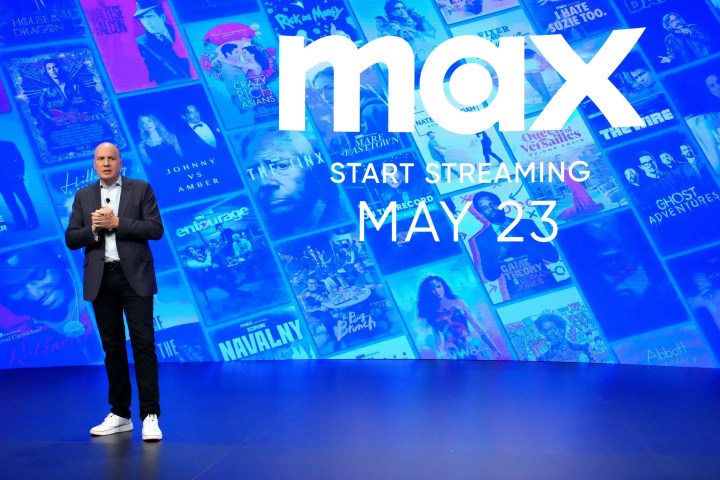“Today you will hear about our incredible content, our extraordinary products, and our plans to bring it all to market.”
“We’re fully committed to continuing this great legacy of storytelling on HBO Max, but we also know that equally important is a fantastic user experience.”
“We all know about the paradox of choice. If you’re surrounded by too many options, you end up less satisfied with your final decision than if you’d been given fewer options in the first place.”
Those were three sentences spoken by a longtime television executive on a stage filled with dark purple and blue lights, announcing a new streaming service. But it wasn’t this week’s announcement from Warner Bros. Discovery of a newish streaming service that combines HBO Max and Discovery content under one roof, with the new (if uninspired) name, Max.
And those quotes were from October 2019, when Warner Bros. (then owned by AT&T) was announcing the shift from HBO Now and HBO Go to, simply, HBO Max — a full half-year before that service would actually be available to subscribers.

Fast forward to April 12, 2023. Different executives. Same color scheme. And, in so many ways, the same story.
Warner Bros. Discovery CEO David Zaslav kicked off an hourlong event to unveil the new Max by telling the story of the legacy of Warner Bros. in Hollywood. “A century of storytelling,” he said from the same Stage 14 that saw such films as Casablanca and A Streetcar Named Desire. “This is our time. This is our chance. And everything is possible — especially with the media assets, the storytelling IP, and the amazing creative talent that we have here at Warner Bros. Discovery. I feel like for our company this is our rendezvous with destiny. What stories are we going to tell that will define our legacy? That we’ll look back on years from now and say ‘We did that. We told those stories.’ ”
Lofty words, indeed. But there’s simply no denying that it’s essentially the same story that was told merely three years ago. New branding. New content. New subscribers. To be fair, and extremely understated, a lot changed over those three years. A pandemic did its best to kill off the theater industry. A shift to streaming-first proved to be short-lived for feature films while opening the door for more TV-friendly fare to hit more eyeballs sooner.
HBO Max was an attempt to simplify the confusing streaming scheme that HBO found itself in. There was the legacy HBO service, itself served by HBO Go and HBO Now. (In case you forgot, the former was for those who had a legacy subscription via cable or satellite, and the latter for those who wanted streaming only.) But it wasn’t a clean break. Everything HBO was available on HBO Max, but not the other way around.
Amid all that was the financial situation — something those all-important consumers don’t actually care about. AT&T owned Warner Bros. as part of WarnerMedia, which never really made sense for a legacy telecom company. And so spinoffs and mergers happened — with Discovery and Zaslav taking a staring role — other remaining execs moved on (willingly or not), and everyone gets to pretend that they’re launching an all-new streaming service in 2023.

“Our enhanced streaming service — that’s what we’re all here for,” Zaslav continued “is playing a staring role. And we named it ‘Max.’ And as you’ll see today, Max offers consumers something truly distinct and appealing.”
That’s all corporate marketing talk, of course. It’s the thing you say when you have to say the thing.
“Max is the one to watch,” said Zaslav, finally forcing the new Max tagline into the conversation. “It’s the one to watch because it’s the place every member of the household can go to see exactly what they want at any given time.”
That’s true, unless that thing happens to not be on Max, and instead is found on one of the other major services, like Paramount+, Disney+, or Netflix. (Or even the much smaller Hulu.) While Max may have more movies and shows in one place than either HBO or Discovery did on their own, it’s not suddenly the only player in town. The key will be to consistently put out new shows and movies that keep subscribers from leaving. (Again, that’s not exactly a new strategy.)
There’s nothing particularly new in the Max price, either. In fact, execs made a big deal about how the Max subscription would cost the same as HBO Max. Except that’s not really true, since 4K content will now cost more and require an “Ultimate” plan.
And talk of the new Max tech platform also was reminiscent of that 2019 HBO Max preview event — never mind that HBO Max has had more than its share of technical issues across multiple platforms. Maybe the new Max tech stack will fix that. Or maybe it’ll just mean new kinks to work out. We’ll have to wait and see on that one.
The bottom line is that all the corporate platitudes aside, nobody has reinvented the wheel with Max. For the most part, it appears to be an exercise in rebranding and changing up the platform on which we use it. Neither of those are small things. And they’re a good place to start building on the streaming legacy as Warner Bros. enters its second century of existence.
Let’s just see if that legacy manages to last longer than three years this time.



